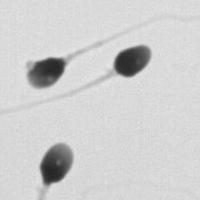Image Analysis of the Morphology of a Spermatozoon
Autumn 2011
Master Semester Project
Project: 00219

A wide corpus of microscopic images of Swiss conscripts' spermatozoa has been collected. This allows for the establishment of standards for the statistical distribution of characteristics of the spermatozoa of healthy young men. The purpose of this project is to develop software tools to which the tedious task of actually measuring the morphology of each spermatozoon can be delegated. After a spermatozoon has been automatically detected and isolated in an image, it is desired to automatically extract characteristics such as the width and length of the main axes of the head, departure of its shape from that of an ellipse, area of the head, area of a piece of the head known as the acrosome, number of vacuoles in the head, number of tails, width of the part of the tail near the head of the spermatozoon, and angle between the tail and the main axis of the head. The software tools to develop will include advanced imaging filters that take advantage of steerability to detect the structures of interest.
This programming project in Java for ImageJ is a collaboration with the Biomedical Imaging Group, the Centre hospitalier universitaire vaudois, and Biophos AG. A prerequisite is to follow (or to have followed) the course on image processing taught by M. Unser.
This programming project in Java for ImageJ is a collaboration with the Biomedical Imaging Group, the Centre hospitalier universitaire vaudois, and Biophos AG. A prerequisite is to follow (or to have followed) the course on image processing taught by M. Unser.
- Supervisors
- Nicolas Chenouard, nicolas.chenouard@epfl.ch, 351 43, BM 4.141
- Michael Unser, michael.unser@epfl.ch, 021 693 51 75, BM 4.136